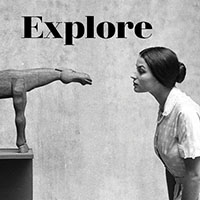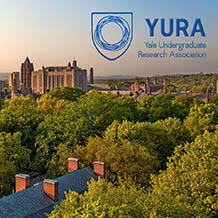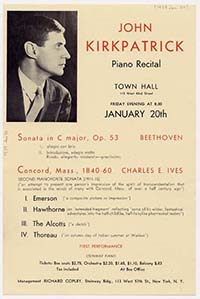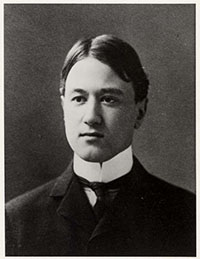A trial for a Chinese language database from the National Library of China, Zhongguo li shi wen xian zong ku. Jin dai bao zhi shu ju ku 中国历史文献总库•近代报纸数据库, has been set up for Yale University users from now to November 10, 2018. The database has been added to Library’s Chinese studies research guide. Since the access is controlled by Yale IP ranges, you have to login Yale VPN first to get access from off-campus locations.
Digitized the contents from the comprehensive collections of the National Library of China with the supplements from other Chinese libraries, the first series of Zhongguo li shi wen xian zong ku. Jin dai bao zhi shu ju ku 中国历史文献总库•近代报纸数据库contains 100 titles (more than 600,000 pages) of Chinese national and local newspapers published between 1911 and 1949. Major national newspapers include 《解放日报》《新华日报》《北京益世报》《大刚报》, and major local newspapers include 《华北日报》《冀热察导报》《绥远西北日报》《黑龙江日报》《汉口市民日报》《山东民国日报》《东南日报》《福建日报》《阵中日报(桂林)》《西康国民日报》《贵州商报》《西京日报》《青海民国日报》《宁夏民国日报》《琼崖民国日报》《新疆日报》etc. The NLC has an ambitious plan to further expand the contents to 500 titles (more than 5,000,000 pages) through 2022. However, this is a full-image database with limited search functions by article title, page and publication date for an individual title as well as the entire database.
Certain restrictions applied during the trial period including no download and print functions. Please feel free to contact Michael Meng, Librarian for Chinese Studies, if you have any questions about the trial.
Post on September 12, 2018 - 10:46am | 
|
Archives at Yale, a powerful new software tool launched in early September, will allow students, faculty, and other researchers to search more precisely across and within more than 5,000 collections held by ten Yale libraries and museums. The tool is built on a widely used open-source web application—which means that Yale’s investment in developing Archives at Yale will also benefit other libraries and museums around the world.
“Yale’s collections are unusually large and diverse, with unique information management needs,” said Susan Gibbons, the Stephen F. Gates ’68 University Librarian and Deputy Provost for Collections and Scholarly Communication. “It required more than eighteen months of development work to adapt and enhance ArchivesSpace, the open-source application, for the complexity of Yale’s multiple repositories and collections. In the process, we’ve developed capabilities that many other ArchivesSpace institutions will be able to use but would not have had the resources to develop on their own.”
The Yale project team, led by IT Portfolio Manager Melissa Wisner, conducted extensive user testing to make the search process more intuitive and accessible. Collection finding aids—written descriptions of collection contents— were enhanced and standardized to address elements like inconsistent date formats and name variations that can trip up search tools and prevent relevant items from surfacing. Another important innovation is the ability to limit searches to a date range, thus screening out irrelevant results. Additionally, when material on a research topic is spread across multiple collections, Archives at Yale can often point users to folders within collections, and sometimes even items within a folder, rather than just to the collections. “Doing archival research can be a bit of a treasure hunt, when materials are buried in big collections with lengthy finding aids,” said Ève Bourbeau-Allard, processing archivist at the Beinecke Rare Book and Manuscript Library. “This saves a lot of time and makes the results less opaque, like lifting a veil.”
The project is a milestone in an ongoing university-wide initiative to unify the experience of working with primary source materials in repositories across campus. “In building extraordinary collections over the last three centuries, Yale has made a commitment to the creation, preservation, and dissemination of human knowledge,” Gibbons said. “Archives at Yale will make it easier for the campus community and the international research community to participate in that important, ongoing work.”
The sheer magnitude of Yale’s collections can be glimpsed at archives.yale.edu, where a dropdown menu shows 5,296 different collections searchable with the new tool. The collections are held by the Beinecke Rare Book and Manuscript Library, Manuscripts and Archives, the Yale Peabody Museum, the Yale Center for British Art, the Divinity School Library, the Gilmore Music Library, the Haas Arts Library, the Lewis Walpole Library, and the Medical Historical Library. The individual collections contain further multitudes of manuscripts, documents, photographs, and ephemera.
Archives at Yale will run side-by-side with the now outmoded Yale Finding Aid Database (YFAD) until the end of the semester while the project team continues to test, fine-tune, and survey users for feedback. However, users are encouraged to move from YFAD to Archives at Yale as soon as possible to access the enhanced search capabilities and to ensure that their initial experiences are incorporated into the ongoing development.
Even after the transition is completed, Archives at Yale will continue to evolve, with help from diligent users and staff. “The culmination of this project is a modern technical platform for archives and special collections that will not only improve discovery and use of Yale’s rich collections but will also bring forward additional service integrations and comprehensive collections management for our cultural heritage,” Wisner said.
Many staff from across the library and the participating repositories contributed to the development of Archives at Yale. The project leads were Marc Custer, Alison Clemens, Alicia Detelich, Emily DiLeo, Mike Morand, Eve Neiger, Christy Tomecek, Steve Wieda, and Melissa Wisner.
Post on September 10, 2018 - 5:35pm | 
|
Archives at Yale, a powerful new software tool launched in early September, will allow students, faculty, and other researchers to search more precisely across and within more than 5,000 collections held by ten Yale libraries and museums. The tool is built on a widely used open-source web application—which means that Yale’s investment in developing Archives at Yale will also benefit other libraries and museums around the world.
“Yale’s collections are unusually large and diverse, with unique information management needs,” said Susan Gibbons, the Stephen F. Gates ’68 University Librarian and Deputy Provost for Collections and Scholarly Communication. “It required more than eighteen months of development work to adapt and enhance ArchivesSpace, the open-source application, for the complexity of Yale’s multiple repositories and collections. In the process, we’ve developed capabilities that many other ArchivesSpace institutions will be able to use but would not have had the resources to develop on their own.”
The Yale project team, led by IT Portfolio Manager Melissa Wisner, conducted extensive user testing to make the search process more intuitive and accessible. Collection finding aids—written descriptions of collection contents— were enhanced and standardized to address elements like inconsistent date formats and name variations that can trip up search tools and prevent relevant items from surfacing. Another important innovation is the ability to limit searches to a date range, thus screening out irrelevant results. Additionally, when material on a research topic is spread across multiple collections, Archives at Yale can often point users to folders within collections, and sometimes even items within a folder, rather than just to the collections. “Doing archival research can be a bit of a treasure hunt, when materials are buried in big collections with lengthy finding aids,” said Ève Bourbeau-Allard, processing archivist at the Beinecke Rare Book and Manuscript Library. “This saves a lot of time and makes the results less opaque, like lifting a veil.”
The project is a milestone in an ongoing university-wide initiative to unify the experience of working with primary source materials in repositories across campus. “In building extraordinary collections over the last three centuries, Yale has made a commitment to the creation, preservation, and dissemination of human knowledge,” Gibbons said. “Archives at Yale will make it easier for the campus community and the international research community to participate in that important, ongoing work.”
The sheer magnitude of Yale’s collections can be glimpsed at archives.yale.edu, where a dropdown menu shows 5,296 different collections searchable with the new tool. The collections are held by the Beinecke Rare Book and Manuscript Library, Manuscripts and Archives, the Yale Peabody Museum, the Yale Center for British Art, the Divinity School Library, the Gilmore Music Library, the Haas Arts Library, the Lewis Walpole Library, and the Medical Historical Library. The individual collections contain further multitudes of manuscripts, documents, photographs, and ephemera.
Archives at Yale will run side-by-side with the now outmoded Yale Finding Aid Database (YFAD) until the end of the semester while the project team continues to test, fine-tune, and survey users for feedback. However, users are encouraged to move from YFAD to Archives at Yale as soon as possible to access the enhanced search capabilities and to ensure that their initial experiences are incorporated into the ongoing development.
Even after the transition is completed, Archives at Yale will continue to evolve, with help from diligent users and staff. “The culmination of this project is a modern technical platform for archives and special collections that will not only improve discovery and use of Yale’s rich collections but will also bring forward additional service integrations and comprehensive collections management for our cultural heritage,” Wisner said.
Many staff from across the library and the participating repositories contributed to the development of Archives at Yale. The project leads were Marc Custer, Alison Clemens, Alicia Detelich, Emily DiLeo, Mike Morand, Eve Neiger, Christy Tomecek, Steve Wieda, and Melissa Wisner.
Post on September 10, 2018 - 5:35pm | 
|
 Yale students, faculty and staff are invited to the fourth annual Undergraduate Research Symposium hosted by the Yale Undergraduate Research Association (YURA) in the Sterling Memorial Library nave on Friday, Sept. 14, 2-4 p. m. Founded in 2015, YURA’s mission is to foster a community of undergraduate researchers at Yale and to connect students interested in doing research with mentors and other resources. This year’s symposium will feature 38 current Yale undergraduates presenting posters on their summer research projects. Yale students, faculty and staff are invited to the fourth annual Undergraduate Research Symposium hosted by the Yale Undergraduate Research Association (YURA) in the Sterling Memorial Library nave on Friday, Sept. 14, 2-4 p. m. Founded in 2015, YURA’s mission is to foster a community of undergraduate researchers at Yale and to connect students interested in doing research with mentors and other resources. This year’s symposium will feature 38 current Yale undergraduates presenting posters on their summer research projects.
Their topics include:
- Trusting Robots: Examining the Influence of Robotic Personality and Embodiment on Human Trust
- Species Delimitation in Mexican Mangosteens
- Longitudinal Study of Lifestyle Factors for Bone Fracture in Breast Cancer Survivors
- Understanding the Health Impacts of Agent Orange Exposure on Vietnam War Veterans.
- Natural Language Counting Using Non-Corpus Based Models for the Voynich Manuscript
- Characterizing the Ultraviolet Emission of M Dwarf Stars with Exoplanets
This event is open to the campus community only.
Post on September 10, 2018 - 2:34pm | 
|
The Irving S. Gilmore Music Library has completed an eighteen-month project to digitize and stream online a collection of early, rarely heard performances of works composed by Charles Ives.
The project provides extraordinary new global access to the work of one of the pre-eminent composers of the twentieth century and the first American composer to gain international recognition. Four hundred thirty-six recorded performances of Ives’s compositions can now be streamed online by anyone connected to the Yale University network. A subset of the recordings can be streamed beyond the Yale network, anywhere in the world.
The newly digitized performances span approximately 335 hours and comprise the Charles Ives Rare and Non-Commercial Sound Recording Collection (MSS 14 HSR), part of the library’s Historical Sound Recordings unit. With funding from the Grammy Museum, digital recordings were produced from fragile acetate disks (some with glass cores), open reel tapes, and other legacy recording media on which the original performances were captured.
The significance and quality of the recordings, coupled with their long-term preservation and expanded access, make this project a landmark for scholars of music. It will be of particular interest to contemporary artists preparing to perform Ives’s works. “These recordings offer performers extraordinary insights into how the works of Ives have been interpreted over the past eighty years or so,” said Jonathan Manton, music librarian for digital and access services.
 In addition to preserving the performances, Yale University Library secured the legal rights to make a subset of the recordings globally available for the first time. They all include one of Ives’s most significant works, his Piano Sonata No. 2, "Concord, Mass, 1840-1860,” performed by the noted Ives scholar John Kirkpatrick, later curator of the Ives Archive at Yale. The recordings capture six Kirkpatrick performances at different stages of his career. They include the world premiere at New York Town Hall on January 20, 1939; the first radio broadcasts on WABC in New York on March 24 and 31, 1939; and a performance at Yale University in 1969. The 1939 performances are the earliest known complete recordings of the sonata, and they predate the first commercial recording—also by Kirkpatrick—by nine years. “Kirkpatrick was the foremost interpreter of Ives’s work,” Manton said. “These recordings allow us to trace how his interpretation of the Concord Sonata evolved throughout his career.” In addition to preserving the performances, Yale University Library secured the legal rights to make a subset of the recordings globally available for the first time. They all include one of Ives’s most significant works, his Piano Sonata No. 2, "Concord, Mass, 1840-1860,” performed by the noted Ives scholar John Kirkpatrick, later curator of the Ives Archive at Yale. The recordings capture six Kirkpatrick performances at different stages of his career. They include the world premiere at New York Town Hall on January 20, 1939; the first radio broadcasts on WABC in New York on March 24 and 31, 1939; and a performance at Yale University in 1969. The 1939 performances are the earliest known complete recordings of the sonata, and they predate the first commercial recording—also by Kirkpatrick—by nine years. “Kirkpatrick was the foremost interpreter of Ives’s work,” Manton said. “These recordings allow us to trace how his interpretation of the Concord Sonata evolved throughout his career.”
Researchers and the general public may live-stream the newly accessible recordings from anywhere in the world using these links:
· 1939-01-20: World Premiere, New York Town Hall. Complete performance. Includes encore of last movement.
· 1939-03-24: CBS Music Hour, Keyboard Concerts, WABC. Emerson and Alcotts only.
· 1939-03-31: CBS Music Hour, Keyboard Concerts, WABC. Hawthorne and Thoreau only.
· 1939-09-28: First complete radio broadcast. Composers Forum, WNYC.
· 1959-10-19: Emerson only.
· 1969-02-07: Complete recording. Sprague Memorial Hall, Yale University.
The full collection is available to the Yale community and to researchers and visitors connected to the Yale network.
 Charles Ives was born in Danbury, Conn., in 1874 and studied music at Yale. After his graduation in 1898, he worked in the insurance industry for 30 years, composing music in his free time. Later in life, he gained recognition, including a Pulitzer Prize in 1947. However, it wasn’t until after his death in 1954 that his true genius became widely known. Charles Ives was born in Danbury, Conn., in 1874 and studied music at Yale. After his graduation in 1898, he worked in the insurance industry for 30 years, composing music in his free time. Later in life, he gained recognition, including a Pulitzer Prize in 1947. However, it wasn’t until after his death in 1954 that his true genius became widely known.
The Gilmore Music Library’s special collections related to Ives and his music are extensive. The Charles Ives Papers (MSS 14) encompass 51 linear feet of original music manuscripts, literary writings, correspondence, diaries, scrapbooks, photographs, and other archival material. For more information about the Charles Ives Papers, the Charles Ives Rare and Non-Commercial Sound Recording Collection, and other Ives resources, visit archives.yale.edu.
Post on September 9, 2018 - 4:16pm | 
|
To mark the 50th anniversary of the 1968 Democratic National Convention in Chicago, we invite you to join us for Haskell Wexler's Medium Cool, followed by a discussion with Professor Bevery Gage. Robert Forster stars as a TV news cameraman in what Vincent Canby described as "a film of tremendous visual impact, a kind of cinematic Guernica, a picture of America in the process of exploding into fragmented bits of hostility, suspicion, fear, and violence." Featuring the music of Love and the Mothers of Invention, Medium Cool was added to the National Film Registry in 2003. 35mm print form the Yale Film Archive.
Visit the event page!
Time/Date:
7 p.m. Saturday, Sept. 29
Location:
Whitney Humanities Center Auditorium
53 Wall Street
New Haven, CT
This Democracy in America and Treasures from the Yale Film Archive screening is presented by 320 York Humanities, Films at the Whitney, and the Yale Film Study Center with support from Paul L. Joskow ’70 M.Phil., ’72 Ph.D.
What is Treasures from the Yale Film Archive?
Treasures from the Yale Film Archive is an ongoing series of classic and contemporary films in 35mm curated by the Yale Film Study Center and screened at the Whitney Humanities Center.
Treasures screenings are always free and open to the public.
Sign up for the Yale Film Study Center Mailing List online (we're in the Libraries category).
Post on September 7, 2018 - 11:59am | 
|
The Irving S. Gilmore Music Library is pleased to announce the completion of an 18-month project, generously funded by a grant from the Grammy Museum, focused on preserving approximately 335 hours of unique non-commercial audio, predominantly from 1937-1956, featuring music by Charles Ives (1874-1954). The 436 recordings, that now make up the Charles Ives Rare and Non-Commercial Sound Recordings Collection (MSS 14 HSR), many on highly fragile legacy recording formats, were digitized during the project and are now available for research. A finding aid for the collection is now available, which includes links to streaming access for each recording.
In addition to preserving these important recordings, Yale University Library was also able to successfully secure the necessary rights to make one of the most important sets of recordings in the collection available to stream globally. These publicly available recordings include one of Ive's most noted works, his Piano Sonata No.2, "Concord, Mass, 1840-1860,” performed by the renowned Ives interpreter, John Kirkpatrick. The recordings capture six different performances of the work by Kirkpatrick at different stages of his career, from the World Premiere at New York Town Hall on January 20th, 1939, to the first radio broadcasts on WABC in New York on March 24th and 31st 1939, through to a performance at Yale University in 1969. The 1939 performances are particularly notable as they are the earliest known complete recordings of the work, predating the first commercial recording, also performed by Kirkpatrick, by nine years. None of these recordings have been available until now. As the various parts of these performances are spread across multiple items in the collection, the following playlists are available for each performance:
1939-01-20: World Premiere, New York Town Hall. Includes encore of last movement.
1939-03-24: CBS Music Hour, Keyboard Concerts, WABC. First radio broadcast. Emerson and Alcotts only.
1939-03-31: CBS Music Hour, Keyboard Concerts, WABC. First radio broadcast. Hawthorne and Thoreau only.
1939-09-28: Composers Forum, WNYC. First complete radio broadcast.
1959-10-19: Emerson only.
1969-02-07: Sprague Memorial Hall, Yale University.
All other materials in the collection are available when connected to the Yale network (all networks except Yale Guest).
This project increases access to the Gilmore Music Library's renowned special collections related to Ives, which includes the Charles Ives Papers, consisting of original music manuscripts, literary writings, correspondence, diaries, scrapbooks and photographs.
Photo: Ive's Yale graduation photograph, 1898. MSS 14, The Charles Ives Papers in the Irving S. Gilmore Music Library of Yale University. Photographer unknown.
Post on September 6, 2018 - 11:29am | 
|
Through Bergman's Lens: Ingmar Bergman Centenary Film Series begins with two films from 1953 starring the great Harriet Andersson. Dave Kehr wrote that Summer with Monika shows Bergman's "developing ability to probe the psychology of a rich, vital woman without losing his objectivity," while Derek Adams praised Sawdust and Tinsel's "richly baroque compositions and persistent use of deep focus brilliantly exploiting the circus and theatre settings." 35mm prints from the Yale Film Archive.
Visit the event page and see the series poster!
Time/Date:
Thursday, Sept. 20
6 p.m. Opening Reception
7 p.m. Summer with Monika (1953, 97 mins)
9 p.m. Sawdust and Tinsel (1953, 93 mins)
Location:
Whitney Humanities Center Auditorium
53 Wall Street
New Haven, CT 06511
Through Bergman's Lens is presented by the Yale Film Study Center and Films at the Whitney with support from Paul L. Joskow '70 M.Phil., '72 Ph.D.
Post on September 6, 2018 - 11:21am | 
|
A trial for a Chinese language database, Song Tomb Inscriptions Database 《宋代墓誌銘資料庫》, has been set up for Yale University users from now to October 31, 2018.
Song Tomb Inscriptions Database 《宋代墓誌銘資料庫》 is the first series of Zhonghua Shuju’s 中華書局 China Stone Inscriptions Database 《中華石刻數據庫》. It currently includes 6,403 items.
The trial URL is http://inscription.ancientbooks.cn/docShike. You can also access this database through the Yale University Library’s Chinese studies research guide at https://guides.library.yale.edu/China/. Since the access is controlled by Yale IP ranges, you have to login Yale VPN first to get access from off-campus locations.
Please feel free to contact Michael Meng, Librarian for Chinese Studies, if you have any questions about the trial.
Post on September 6, 2018 - 10:09am | 
|
A home-grown library classification system that has challenged generations of incoming Yalies is being phased out of the Sterling Memorial Library stack tower. Thousands of books will soon be easier to find in the online catalog and on the shelves.
Back in 1890, Yale librarians developed their own numbering system for classifying books. Known as “Yale-Class,” the system was used for more than eighty years. In the 1970s, the library moved to the increasingly universal Library of Congress classification system, but some 400,000 books retained their Yale-Class call numbers, enough to fill three levels of Sterling Memorial Library’s fifteen-level stack tower.
The dual system was confusing for students and other library users—and sometimes even for trained staff. “It’s one of the most common shelving errors to shelve in the wrong classification,” said Christopher Killheffer, associate director for access service operations. “Despite lots of double checking, it’s pretty much inevitable.”
In addition, as card catalogs gave way to online discovery systems, electronic records for many Yale-Class books were incomplete or missing, making the books virtually invisible to library users searching online.
Now, all that is changing. On the seventh floor of Sterling, a five-person project team is retrieving the Yale-Class books from the stacks, one rolling book cart at a time, to assess their physical condition, update their catalog records, and make them easier to locate in the future.
Books in poor repair—up to 40 percent of the total—are being flagged for protective measures or conservation. Any books published before 1800, or otherwise rare, are being transferred to the Beinecke Rare Book and Manuscript Library. Books that have circulated recently or that subject librarians deem important to their disciplines will be re-classed in the Library of Congress system and re-shelved in Sterling. Less-used books will keep their Yale-Class call numbers and be stored at Yale’s Library Shelving Facility in Hamden, from where, thanks to updated catalog records, they can be rapidly retrieved and delivered to any Yale library on request.
By January 2019, if all goes according to plan, the Sterling stacks will be fully re-classed and re-ordered in the Library of Congress system, and the entire collection will be more readily discoverable. “It’s an immensely complicated project at an ambitious pace, but we are having great success because of the diligence and dedication of the project team,” Killheffer said.
The last time the library shuffled so many books was to empty out Seeley G. Mudd Library, torn down in 2013 to make way for the two newest residential colleges. When that project was completed, use of the collection materials rose because people could find them more easily.
Post on September 3, 2018 - 7:49am | 
|